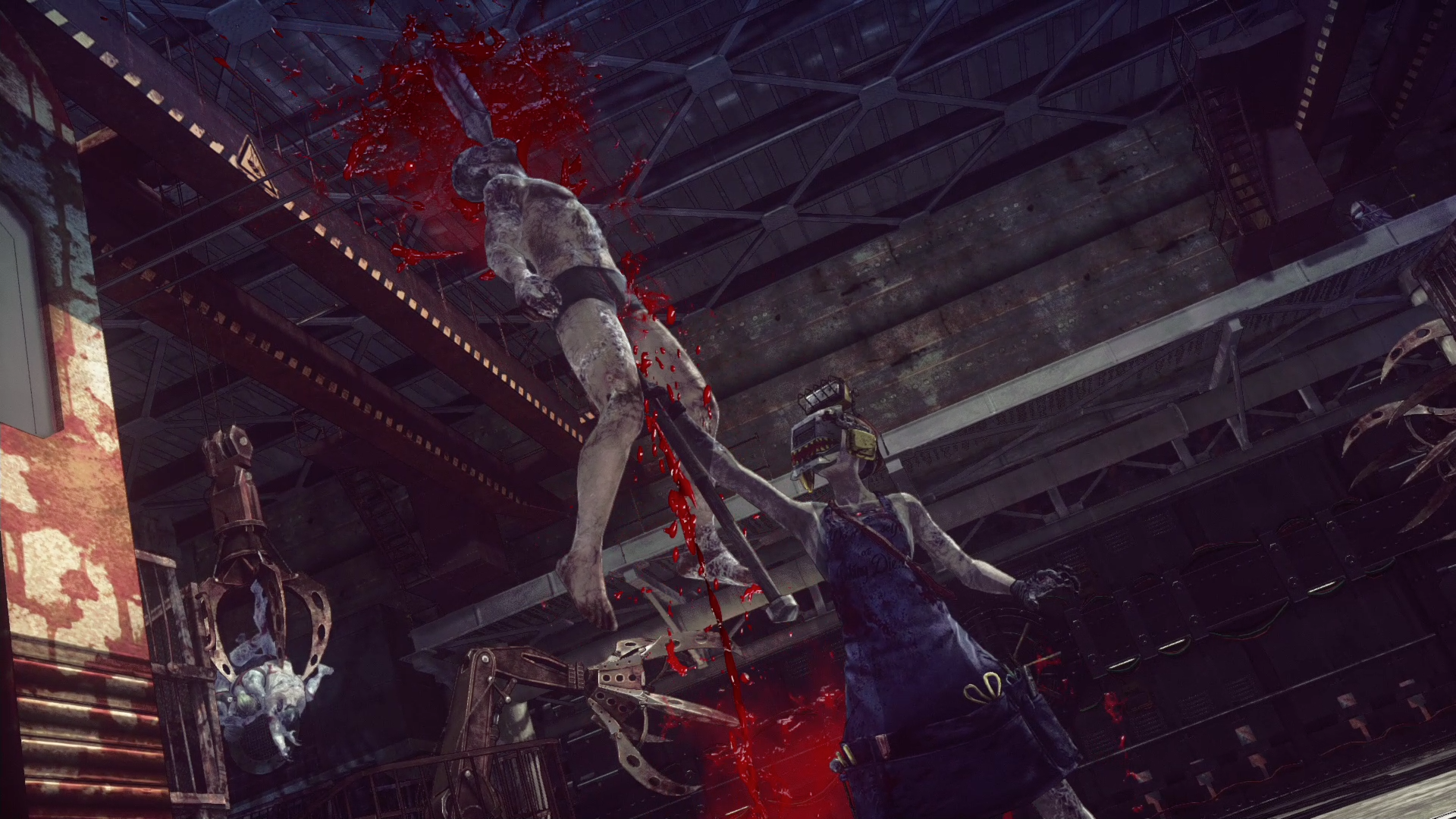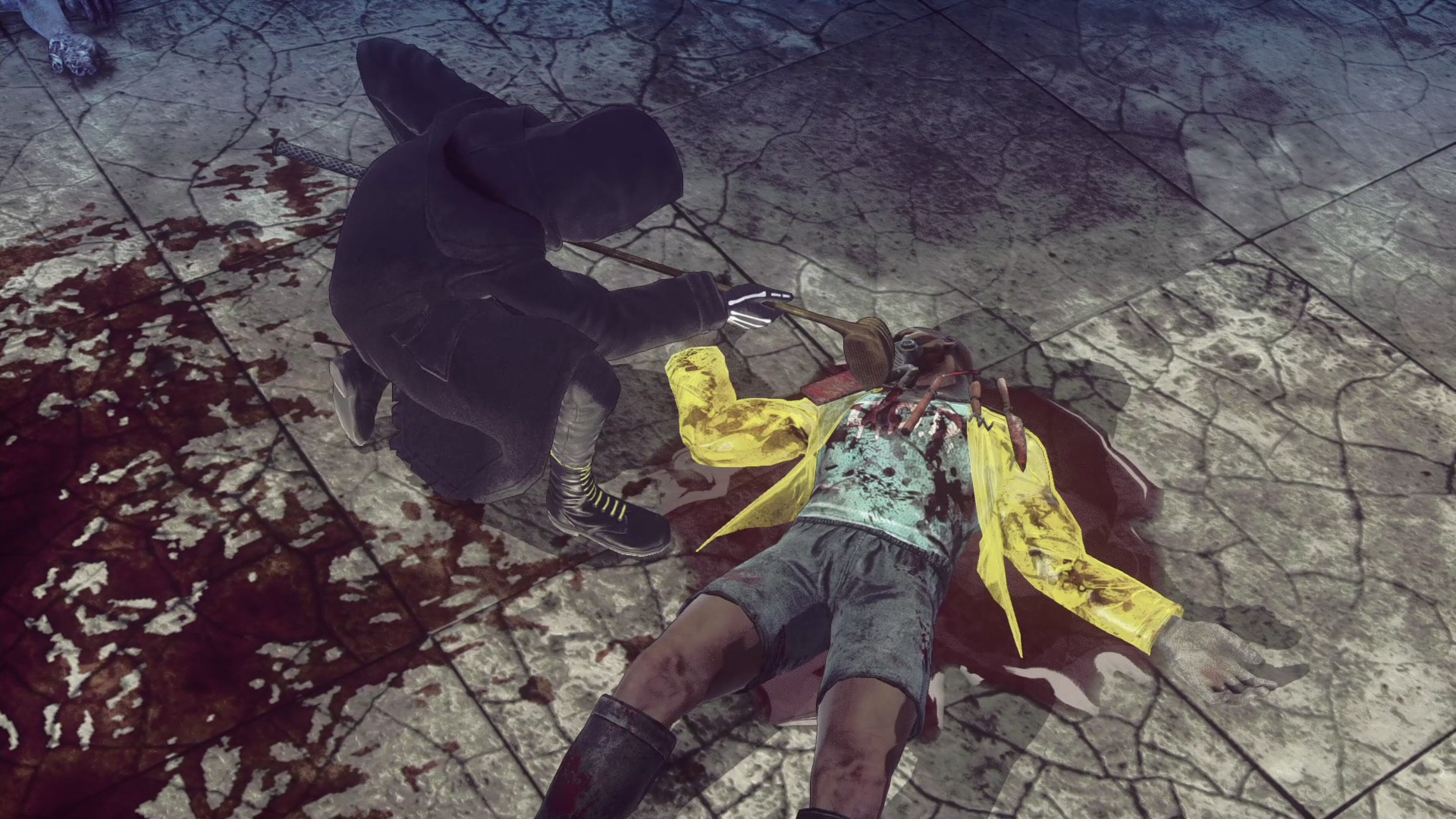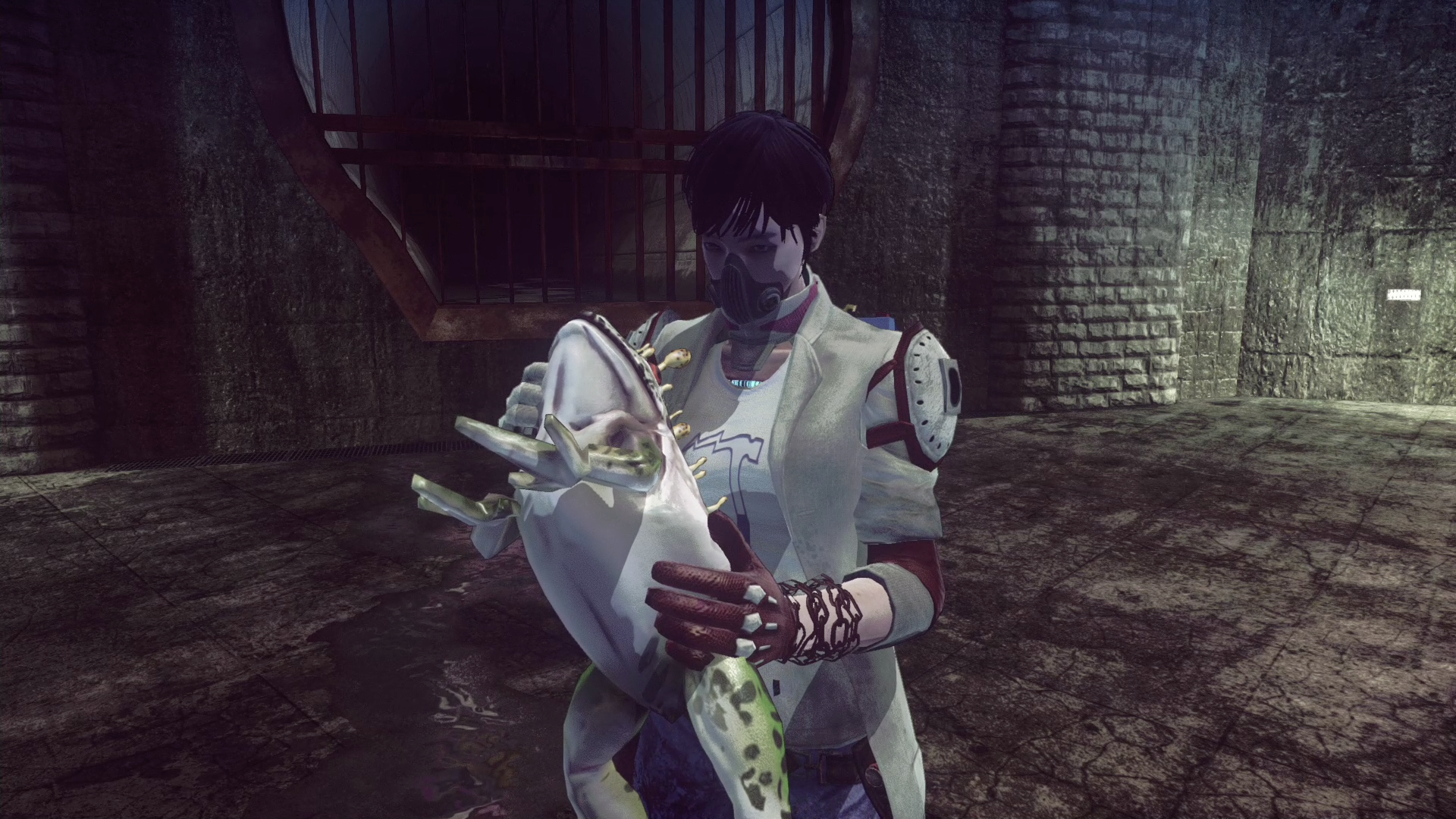I spent $24 to beat one boss in Let It Die, and I'll probably do it again

In many ways, Let It Die is harder than Dark Souls. Yes, that comparison gets made so often these days that it borders on meaningless - but in this case, it just makes sense. Grasshopper Manufacture's PS4-exclusive, free-to-play action RPG exclusive clearly mimics the basic framework of FromSoftware's legendary Souls series, with its laborious, stamina-driven third-person combat, treacherous level layouts, and grotesque enemies that can quickly overwhelm you if you're not cautious. But Let It Die incorporates one test of will you won't find in Dark Souls: the temptation of spending real-world money to facilitate in-game progress. And in my experience with this fantastic, potentially costly free game, Let It Die's relationship with death becomes an intoxicating mix of skill checks and self-control, something unlike any other console game out there.
Contrary to outdated assumptions about the free-to-play model, Let It Die is not a stingy, money-grubbing game that gives you a little taste before demanding constant monetary tribute. This is a rare F2P title with the presentation and depth of a full-priced game, complete with a lovable cast of characters who are beyond bizarre and plenty of nuanced combat mechanics - exactly what you'd expect from the studio behind cult classics like No More Heroes and Killer 7. It's also incredibly giving when it comes to resources, to the point where you can play for hours without thinking about spending a cent. After Let It Die made its surprise debut at PlayStation Experience last December, it was pretty much all I played for the rest of the month - so when the GR+ staff had the chance to sing praise for the unsung heroes of 2016, I pledged that I'd drop at least $60 on Let It Die's microtransactions to show my support for this kind of wonderfully unconventional game. Vote with your wallet, I always say.
Your cash money can be used to buy Death Metals, little skulls that look like rainbow-colored rock candy. These are the most valuable form of basic currency in Let It Die's economy, but the game isn't afraid to lavish them upon you free of charge: you're constantly gifted them via login bonuses and special events, and plenty of quests offer a Death Metal as a reward (though regrettably, some of those quests have been bugged since launch). And while you can theoretically convert your Death Metals into the Kill Coins used to buy items, it's made obvious that it would be a waste. Death Metals are mainly used to expand your storage, which becomes necessary for advanced crafting, or - most importantly - paying for the privilege to instantly revive after death.
If this strikes you as some serious 'pay-to-win' malarky waiting to happen, I'd say you're only half - or better yet, a quarter - right. It's true that, should your earned-for-free supply of Death Metals run out, buying one to resurrect exactly where you were, with a full health bar and a few moments of being undetectable to enemies, can get you past a part you should've otherwise failed. To help you make your decision, you're always greeted post-demise by Direct Hell Insurance's Kiwako Seto, the cutie in charge of insurance sales inside the ever-shifting Tower of Barbs you're ascending. But spending copious amounts of money is no guarantee of victory; if anything, every revival brings you closer to a state where your Death Metals have diminishing returns, because all your items are gone and nothing but raw skill can save you.

This is where Let It Die's crucial differences from Dark Souls - beyond the modern post-apocalypse setting, segmented stages, and weapon set straight out of a hardware store - start to shine through. Your arsenal of weapons and equipped armor will be breaking into worthless scrap on a regular basis, because Let It Die treats item durability as if all your gear is as rusty, fragile, and hodgepodge as it looks. Also, health-restoring items are few and far between: you'll need to seek out and stock up on the edible vermin and buff-granting mushrooms scattered around the Tower if you want to waltz into a fight fully prepared. By contrast, I don't think I've ever had a weapon actually break on me when I needed it in a Souls game, and the way your Estus Flasks replenish at every bonfire feels awfully merciful in hindsight. But Let It Die's biggest distinction from Dark Souls is the way you're leveling up an entire roster of interchangeable heroes, rather than pouring all your resources into a single, ever-strengthening undead protagonist.
Let It Die takes a cue from the roguelike genre in that death strips you not only of your items, but of your character (called a Fighter) itself and all the stat-boosting Decals you've affixed to their skin like a Nascar racing suit. They're not lost forever: you can recover your slain Fighter by coughing up a hefty Kill Coin fee, or by finding and executing your now-zombified past self with a new character, restoring their soul and inventory stash to your collection. Still, having to claw your way back up the Tower while leveling up a fresh Fighter is a pretty serious consequence to death; it doesn't quite sting like losing a Hardcore character in Diablo 3, but it's a (hopefully temporary) loss of a massive amount of time invested. A single Death Metal can prevent all that, at least temporarily. But there will come a time, when your Death Metals run out or a situation just seems too hopeless, that you must start anew. You'll steel yourself to build up a new character, take a solemn look at the corpse of your hero, and let it die. Hell, you don't even have a choice when first learning this mechanic the hard way, after the initial character you create is automatically killed off at the end of the tutorial.

Now that you know how death and taxes - er, microtransactions - work in Let It Die's universe, it's time I told you how I spent $24 to overcome a single boss fight. On Floor 23 of the Tower's current 40-story structure awaits GOTO-9 Lvl. 7, a ridiculously powered-up version of a boss you've already bested before. Bear in mind, I had traversed around 200 Floors across dozens of hours to reach this point, gathering crafting materials, leveling up more Fighters, and just generally learning the game; Let It Die unabashedly puts an emphasis on grinding and backtracking. Now, I was feeling pretty confident about my progress up until that point, having blown through Floors 15-22 after spending the better part of a month replaying the same first area. I was hooked on the feeling of quick and steady advancement now, but GOTO-9 was a brick wall in the way of further ascension.
Sign up to the GamesRadar+ Newsletter
Weekly digests, tales from the communities you love, and more
This particularly vile-looking boss means business: GOTO-9 can shatter your armor with just a few hits, has a homing belly-slam that was killing my max-level Fighter in a single splat, and constantly vomits out skeletons that get in your way or bile that makes you slip and fall banana-peel-style into an assuredly fatal stunned state. After getting obliterated by GOTO-9 two times and unable to afford more Kill Coin revivals at the moment, I decided it was time to offset my inadequacies with some moolah. I burned through a $5 set of 10 Death Metals, then the bulkier $14 bundle for 30, and another additional $5 for the one-time-only discount on another 30 pack. By this point, my poor Fighter was dodge-rolling around in her skivvies, her armor long since destroyed, and even my stockpile of freshly crafted weapons was starting to run low. Kiwako and I were exchanging glances so often, I wondered if this was the beginning of a beautiful romance.

Half-an-hour and about 47 Death Metals since the fight had started, I had finally bested GOTO-9 at sizable cost to my sanity and debit card. And, as you might've guessed, the sensation of triumph felt a bit hollow, outweighed by relief that I had staved off the allure of spending more money to ensure victory. I technically won the fight and progressed a bit further, but I had lost the battle of wills against my wallet (ignoring the fact that I was already set to spend that kind of money at some point, and still have a ways to go until I hit my $60 quota).
Throwing all the Death Metals I had and more at this bout, and buying the means to make progress I hadn't fought all that hard for, felt like summoning another player in Dark Souls to effectively do all the work for you in overcoming a particularly tough boss fight. Instead of learning the intricacies of the encounter, all the boss' tells and weaknesses that only become apparent after plenty of attempts, I had fallen back on a crutch made of Death Metals to offset for my lapse in tenacity and persistent effort. If I had accepted the fact that defeating GOTO-9 was going to take more time, I might've gleaned tactics like exploiting his weakness to the Red Hot Iron weapon, or hoarding invisibility and time-slowing mushrooms so I could easily avoid his attacks until he exploded into a puddle of guts.
Yet, when I look back on the experience, all I can do is smile. By factoring in the possibility of spending real money, Let It Die presented me with a unique kind of challenge unlike any I've taken on in an action RPG before. Dark Souls and its ilk test your preparedness and persistence, but dying and retrying is a never a question of thrift. With Let It Die, you can effectively equate every instance of failure to a 50-cent expenditure, should you choose to fight on. Or, you can keep your money in your PSN pocket, review what you've learned, and try again later. The two-quarter cost of a continue immediately brings classic arcade games to mind: you could try to brute force your way through a toughie like Metal Slug, or strive for a 1-credit-clear that can only be attained through true mastery. It's a question of how much time and money you're willing to spend. The satisfaction you get out of the encounter directly correlates to the work you put in, and just how resolute you are when it comes to letting money burn a hole in your pocket.

What I hope you take away from my story is that Let It Die will test your mettle in refreshingly new ways, even if its action RPG structure feels pleasantly familiar. Buying extra lives might sound like the lowest form microtransactions can take, short of some way to skip to an ending cutscene or post-game unlock via a simple payment. But Let It Die handles its revenue-generating systems with grace and restraint, giving you all the responsibility when it comes to what you're willing to spend. Plenty of players have recounted reaching Floor 40 without paying for a single Death Metal. Frankly, I'm ok with a repeat of my GOTO-9 experience for later roadblock bosses, because I'm willing to commit some cash in place of time to smooth out my trip to the Tower's tippy-top. As anyone with a giant game backlog knows, time can be an even more precious resource than money.
Part of the reason people love the Souls games is the way they make you hyper-sensitive to danger, putting you in a constant state of high alert so as not to forfeit your precious souls. The resulting tension and sense of self-preservation is what makes defeat so bitter and victory so joyous. But Let It Die raises the stakes even further, because nothing reinforces the value of a virtual life like attaching a real-world cost to it. The only way to see how you'll respond to all that additional risk is to download Let It Die and try it for yourself, which costs you nothing. Whether or not you intend to keep it complimentary is entirely up to you.
Lucas Sullivan is the former US Managing Editor of GamesRadar+. Lucas spent seven years working for GR, starting as an Associate Editor in 2012 before climbing the ranks. He left us in 2019 to pursue a career path on the other side of the fence, joining 2K Games as a Global Content Manager. Lucas doesn't get to write about games like Borderlands and Mafia anymore, but he does get to help make and market them.



